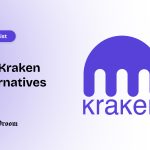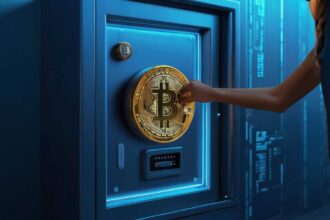Remember when NFTs were the talk of the town? Digital art selling for millions, celebrities jumping on the bandwagon, and everyone seemed to have an opinion about these unique digital assets. But… are NFTs dead or evolving?
Then, the market took a turn. You may have seen the headlines—”Your NFTs are actually—finally—totally worthless.” It seemed like the bubble had burst, and suddenly, everyone was asking: Are NFTs done for? Or is this just a normal part of the cycle for any new market?
Let’s take a closer look, together, and figure out where NFTs stand after the hype has faded.
A Quick Recap to the NFT Boom
Back in 2021, Non-Fungible Tokens (NFTs) exploded into the mainstream. Artists like Beeple sold digital artwork for a staggering $69 million.
Collections like CryptoPunks and Bored Ape Yacht Club became cultural phenomena, with pieces selling for millions of dollars. Celebrities like Eminem and Paris Hilton jumped in, launching their own NFTs and promoting them on late-night TV shows.
Traditional institutions weren’t left behind. Russia’s State Hermitage Museum hosted an NFT art exhibition, and renowned artists like Damien Hirst experimented with NFTs, blurring the lines between physical and digital art.
But then, the inevitable happened—a market correction. NFT trading volumes plummeted from their all-time highs.
Data shows that while many NFTs have lost significant value, the market isn’t entirely dead. Platforms like OpenSea still report trading volumes, albeit lower than during the peak. So, what’s really going on?
What Do the Numbers Say?
Let’s look at some hard numbers. On platforms like NFTPriceFloor, collections such as CryptoPunks still hold a market cap of around 265,000 ETH, despite a slight decline in the price floor over 90 days. On OpenSea, Bored Ape Yacht Club maintains a floor price of about 11.24 ETH with a unique ownership percentage of 54%, indicating a healthy distribution.
These figures suggest that while the hype has died down, there’s still substantial activity and value in top-tier NFT collections.
What Experts Are Saying About the Market?
Experts point out that the NFT market is going through a natural correction cycle. Anoir Houmou, CEO of the video engagement platform RECRD, notes that the initial explosive growth was unsustainable. The current phase is about maturing and focusing on sustainability and real-world utility.
Yale ReiSoleil, CEO of NFT trading platform Untrading, believes that declining volumes signify a market correcting itself after excessive hype—not a market dying.
How NFTs Are Changing the Game?
Despite the market downturn, innovation hasn’t stopped. Artists like Pak introduced concepts like burn.art, where users could “burn” their NFTs to receive a new cryptocurrency called $ASH, challenging traditional notions of value and permanence.
Musicians like Eminem launched NFTs, bridging the gap between music and blockchain. Damien Hirst’s “The Currency Project” questioned the very nature of value and ownership in art.
NFTs in More than Just Art
Platforms are enhancing how we interact with NFTs. Oncyber.io offers 3D gallery experiences, making digital art more immersive. Lazy.com simplifies how users showcase their NFT collections.
Traditional industries are also embracing NFTs. The fashion and luxury goods sectors are using NFTs for authentication and to offer exclusive experiences to customers.
The Future: Are NFTs Dead or Evolving?
NFTs hold immense potential in tokenizing real-world assets (RWAs). From real estate and stocks to carbon credits, NFTs can represent ownership in a secure, transparent way.
For example, NBA Top Shot allows fans to own unique video highlights, combining sports memorabilia with blockchain technology.
NFTs as Tools for Digital Ownership and Utility
Beyond collectibles, NFTs are being used in—
- Music: Artists are using NFTs to sell music directly to fans, bypassing traditional distribution channels.
- Gaming: In-game assets are being tokenized, allowing players true ownership and the ability to trade items outside the game environment.
- Supply Chain: NFTs can track goods through the supply chain, ensuring authenticity and reducing fraud.
“NFTs are redefining what’s possible through verifiable global ownership and authenticity,” says Layne Nadeau, CEO of Nval.
Of course, NFTs aren’t without their challenges. Remember when the market was flooded with low-quality projects? There were so many NFTs out there that it became hard to tell the good from the bad. Speculation got out of hand, and people were buying anything and everything, hoping to strike it rich. This led to inflated prices and, eventually, the market had to correct itself.
Conclusion
So, are NFTs dead or evolving? The answer leans heavily toward evolving. While the initial hype has faded, what remains is a technology with the potential to revolutionize multiple industries.
NFTs are transitioning from a speculative asset to a foundational technology that underpins digital ownership and authenticity. The market is maturing, focusing on real-world utility rather than quick profits.
The future of NFTs is not about overpriced digital art—it’s about innovation, utility, and integrating blockchain technology into everyday life.



















